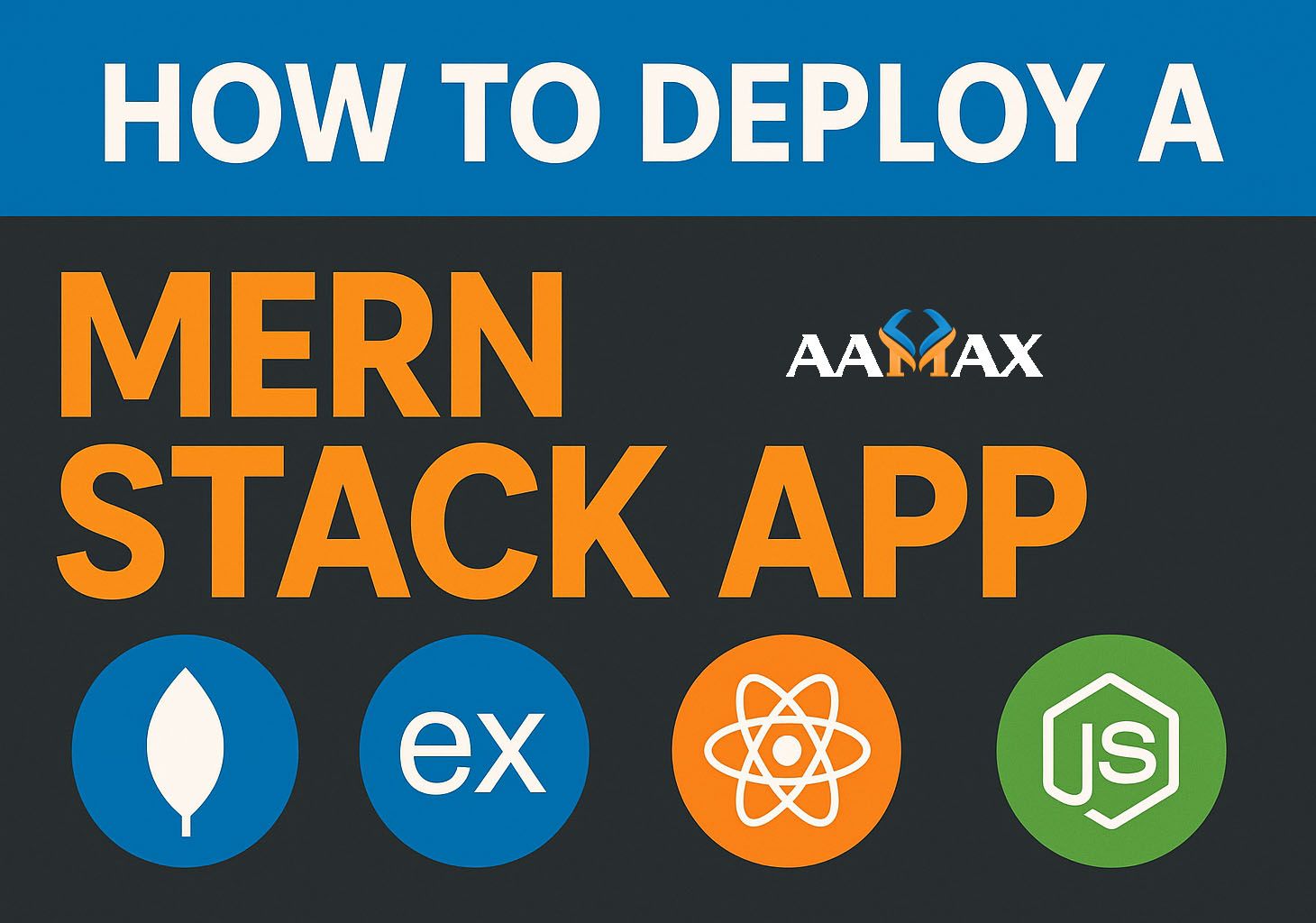
How To Deploy a MERN Stack App
Deploying a MERN stack app (MongoDB, Express.js, React, Node.js) is the final and most exciting stage of your development journey. After weeks of designing, coding, and testing, it’s time to make your application live for users worldwide. However, deployment can be intimidating, especially if you’ve never managed both frontend and backend hosting environments before.
In this guide, we’ll walk you through how to deploy a MERN stack app, covering everything from environment setup to hosting on popular platforms. Whether you’re deploying for a client project or a startup MVP, you’ll find the best practices, tips, and tools to ensure a smooth launch.
If you need expert assistance or want a professional team to handle deployment, you can AAMAX — a full-service digital marketing company offering web development, digital marketing, and SEO services.
What Is the MERN Stack?
Before jumping into deployment, let’s clarify what makes up the MERN stack:
- MongoDB: A NoSQL database that stores data in JSON-like documents.
- Express.js: A lightweight web application framework for Node.js that handles routing and server-side logic.
- React.js: A JavaScript library for building dynamic, interactive user interfaces.
- Node.js: A server-side JavaScript runtime that powers your backend.
The MERN stack is ideal for full-stack JavaScript applications because it allows you to use one language—JavaScript—across the entire project, from frontend to backend to database.
Why Deployment Matters in MERN Projects
Deployment isn’t just about “going live.” It’s about creating a stable, secure, and performant environment for your app to operate continuously. A proper deployment ensures:
- Scalability: Your app can handle increasing user loads.
- Security: Sensitive data and APIs are protected.
- Performance: Pages load quickly, and APIs respond efficiently.
- Maintainability: You can easily update or roll back code without downtime.
Step 1: Prepare Your MERN Stack Application
Before deployment, make sure your application is production-ready. This involves:
1.1. Environment Variables
Use a .env file to store sensitive data such as API keys, database URIs, or JWT secrets.
Example .env: env PORT=5000 MONGO_URI=your-mongodb-connection-string JWT_SECRET=your-secret-key Never commit your .env file to version control (e.g., GitHub). Add it to your .gitignore.
1.2. Optimize the React Build
In your React project folder (client), run:
npm run build
This command creates an optimized production build of your frontend in the client/build folder. You’ll later serve this static build via your backend Express server.
1.3. Integrate Frontend with Backend
Modify your server.js or app.js (backend entry file) to serve the React build:
const path = require("path");
app.use(express.static(path.join(__dirname, "client/build")));
app.get("*", (req, res) => { res.sendFile(path.join(__dirname, "client/build", "index.html")); });
This ensures that all routes not handled by the API are redirected to your React frontend.
Step 2: Choose a Deployment Platform
You have several deployment options, depending on your app’s complexity, scalability needs, and budget.
2.1. Popular Hosting Options
PlatformDescriptionIdeal ForRenderFree tier, easy to use, great for small projectsBeginners, prototypesVercelOptimized for React/Next.js but supports full-stack appsFrontend-heavy appsHerokuSimplified setup, connects easily with GitHubLearning or small production appsAWS / Google Cloud / AzureEnterprise-grade scalabilityLarge-scale appsDigitalOcean / Linode / VultrFull control with virtual serversDevelopers comfortable with Linux
For simplicity, let’s walk through deployment using Render and Heroku—two of the most beginner-friendly platforms.
Step 3: Deploy the Backend (Node.js + Express)
3.1. Setting Up Git Repository
Ensure your code is tracked by Git:
git init git add . git commit -m "Initial commit"
Push your project to GitHub or GitLab:
git remote add origin https://github.com/yourusername/mern-app.git git push -u origin main
git remote add origin https://github.com/yourusername/mern-app.git git push -u origin main
3.2. Deploying on Render
-
Go to Render.com and sign in.
-
Create a new web service.
-
Connect your GitHub repository.
-
Set environment variables (MONGO_URI, JWT_SECRET, etc.).
-
Specify the build command:
npm install && npm run build
- Specify the start command:
npm start
After deployment, ensure your app remains fast and stable. Consider integrating:
-
Uptime monitoring (UptimeRobot, Pingdom)
-
Error logging (Sentry, LogRocket)
-
Performance tracking (Google Lighthouse, New Relic)
-
Database backups (MongoDB Atlas automated backups)
A well-maintained MERN app will provide users with reliability and developers with peace of mind.
Common Deployment Challenges (and Fixes)
ProblemCauseSolutionApp works locally but not onlineEnvironment variables missingEnsure .env variables are set in hosting dashboardCORS errorsBackend not configured properlyUse cors middleware in ExpressAPI not respondingIncorrect base URLDouble-check proxy or API endpointsMongoDB connection failureWrong URI or IP whitelistVerify connection string and Atlas IP settings
Pro Tips for Successful MERN Deployment
-
Keep environments separate: Have distinct .env files for development and production.
-
Minify and compress assets: Use Gzip or Brotli compression for better performance.
-
Monitor resource usage: Watch for CPU/memory spikes, especially on free hosting plans.
-
Automate backups: Protect data using scheduled database backups.
-
Use PM2 for Node.js apps: In advanced setups, PM2 helps keep your server online and restart on failure.
Final Thoughts
Deploying a MERN Stack Development may seem complex, but once you understand the process, it becomes straightforward and repeatable. From connecting your MongoDB database to serving your React frontend through Node and Express, every step contributes to a seamless production experience.
If you want to ensure your deployment is secure, scalable, and optimized, you can AAMAX. The expert developers and digital strategists at AAMAX specialize in MERN stack development, web solutions, digital marketing, and SEO services. Whether you’re launching a startup or scaling an enterprise product, AAMAX ensures your project goes live flawlessly.







